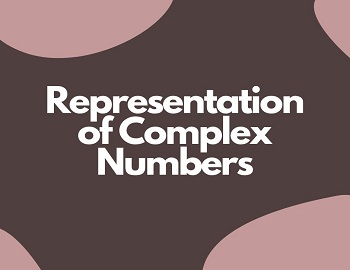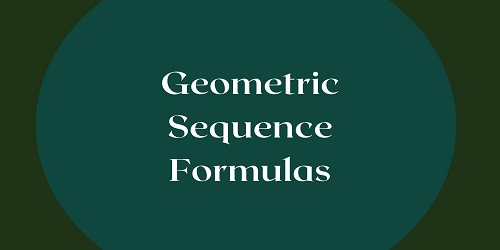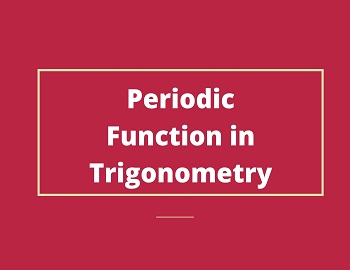Harmonic Progression:
If the reciprocals of the terms of the sequence form an arithmetic progression, then the terms of the given sequence are said to be Harmonic Progression (H.P.).
nth term of H.P.
If the sequence in H.P. is 1/a, 1/(a + d), 1/(a + 2d), ……….., then its nth term is 1/[a + (n – 1)d].
Harmonic Means:
If several numbers are in H.P., then the numbers lying between the first and the last will be called the Harmonic Means between the first and the last numbers.
If three numbers are in H.P., then the middle number will be called the Harmonic Mean (H.M.) between the first and the last.
Let H be the H.M. between a and b.
∴ a, H, b are in H.P.
| 1/a, 1/H, 1/b, are in A.P. ⇒ 2/H = 1/a + 1/b ⇒ 2/H = (a + b)/ab ⇒ H/2 = ⇒ H = 2ab/(a + b) |
| Example- Insert 4 H.M. between 20 and 5. Solution- Let H1, H2, H3, H4 be the 4 H.M. between 20 and 5. ∴ 20, H1, H2, H3, H4, 5 are in H.P. ⇒ 1/20, 1/H1, 1/H2, 1/H3, 1/H4, 1/5 are in A.P. Let d be the common difference of A.P. d = (1/5 – 1/20)/(4 + 1) ⇒ d = 3/100 ∴ 1/H1 = 1/20 + d = 1/20 + 3/100 = 8/100 1/H2 = 1/20 + 2d = 1/20 + 6/100 = 11/100 1/H3 =1/20 + 3d = 1/20 + 9/100 =14/100 and 1/H4 = 1/20 + 12/100 = 17/100 ∴ 4 H.M.’s are 100/8, 100/11, 100/14, and 100/17. |
| Example- The 10th and 14th terms of an H.P. are 2/29 and 2/41 respectively. Find the 20th term. Solution- 10th term of H.P. T10 = 2/29 ∴ corresponding 10th term of A.P. a10 = 29/2 14th term of H.P. T14 = 2/41 ∴ corresponding 14th term of A.P. a14 = 41/2 Let ‘a’ and ‘d’ be the first term and common difference of A.P. Now, a10 = 29/2 ⇒ a + 9d = 29/2 ……….(i) and a14 = 41/2 ⇒ a + 13d = 41/2 ……….(ii) Subtract (ii) from (i):- -4d = 29/2 – 41/2 ⇒ -4d = -12/2 ⇒ -4d = -6 ⇒ d = 3/2 Substitute d = 3/2 in equation (i):- a + 9 (3/2) = 29/2 ⇒ a + 27/2 = 29/2 ⇒ a = 29/2 – 27/2 ⇒ a = 1 Now, a20 = a + 19d = 1 + 19 (3/2) = 1 + 57/2 = 59/2 ∴ The 20th term of H.P. is 2/59. |
| Example- If the pth, qth, and rth terms of an H.P. be x, y and z respectively, prove that (q – r) yz + (r – p) zx + ( p – q) xy = 0. Solution- pth term of H.P. = x ⇒ pth term of A.P. = 1/x qth term of H.P. = y ⇒ qth term of A.P. = 1/y and rth term of H.P. = z ⇒ rth term of A.P. = 1/z Let a and d be the first term and common difference of A.P. ∴ a + (p – 1) d = 1/x …………(i) Also, a + (q – 1) d = 1/y …………(ii) a + (r – 1) d = 1/z …………(iii) Subtract (ii) from (i):- (p – q) d = 1/x – 1/y ⇒ (p – q) d = (y – x)/xy ⇒ p – q = (y – x)/xyd …………(A) Subtract (iii) from (ii):- (q – r) d = 1/y – 1/z ⇒ (q – r) d = (z – y)/yz ⇒ q – r = (z – y)/dyz …………(B) Subtract (i) from (iii):- (r – p) d = 1/z – 1/x ⇒ (r – p) d = (x – z)/zx ⇒ r – p = (x – z)/dxz …………(C) Now, (q – r) yz + (r – p) zx + (p – q) xy = [(z – y)/dyz] yz + [(x – z)/dxz ] zx + [(y – x)/dxy] xy = (z – y + x – z + y – x)/d = 0/d =0 |
| Example- If the ratio of G.M. and H.M. between two numbers is 5 : 4, prove that the numbers are in the ratio 4 : 1. Solution- Let ‘a’ and ‘b’ be the two numbers. Now, G.M./H.M. = 5/4 ⇒ √ab/(2ab/a+b) = 5/4 ⇒ (a + b)/2√ab = 5/4 Apply Componendo and Dividendo:- (a + b + 2√ab)/(a + b – 2√ab) = (5 + 4)/(5 – 4) ⇒ (√a + √b)2/(√a – √b)2 = 9 ⇒ (√a + √b/√a – √b)2 = (3)2 ⇒ (√a + √b/√a – √b) = 3 Apply Componendo and Dividendo:- ⇒ (√a + √b + √a – √b)/(√a + √b – √a + √b) = 4/2 ⇒ 2√a/2√b = 2 ⇒ √(a/b) = 2 ⇒ a/b = 4 ∴ a : b = 4 : 1 |









Comments (No)